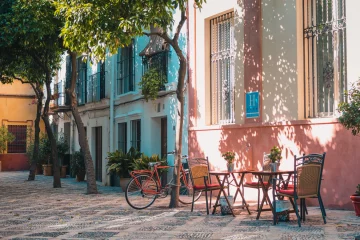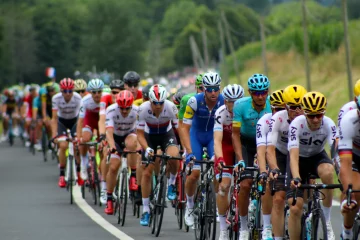Table of Contents
Brazil, a country of contrast
Brazil is the biggest country in South America. It borders every other country of the continent except Chile and Ecuador.
Brazil is very much a country of contrasts. When someone hears the word Brazil, one thinks of the great Amazon forest, fantastic beaches, great soccer players, Carnival time – and that’s all. Well, Brazil, the most important country in South America, certainly has MUCH more to offer – warm people, great cities with everything from slums to high technology, a wide range of weather patterns, an awesome mixture of cultures and races – and much more!
The most visited places in Brazil
The most visited places in Brazil include Fernando de Noronha Island, Rio de Janeiro and São Paulo (the two bustling megacities of the south-east), the more relaxed city of Salvador in the northeast, or the old colonial towns of Ouro Preto and Olinda. For natural beauty, try a visit to Iguazu Falls. If you have the chance, the best time to visit is Carnival.
There is nothing in the whole wide world like Carnival in Rio. Brasilia, the capital city of the country, is known for its great architecture. It is a planned city.
The most up-and-coming resort in Brazil is now the small friendly Praia de Pipa, in the NE of the country; serviced by international airports at Natal and Recife, this small town is popular with both Brazilians and foreign tourists. The laid back attitude of the open and friendly locals make this a welcome change to some of the more recognised but less safe and inviting destinations.
Southern Brazil
In Southern Brazil you can visit the state of Santa Catarina, which is visited every year by people who prefer not too crowded spots like major cities or places where all tourists go. Small beaches like Mariscal, Garopaba, Taquaras or Estaleiro beach are not too far away from medium size cities, so they provide all necessary structure, but at the same time still conserve their natural enchantments. Praia do Pinho (close to Balneario Camboriu – the most important touristic spot in southern Brazil) is the paradise for naturists as it is the first official nude beach in Brazil. Many options of adventure activities such as rafting, diving, fishing, trekking are aso available in this beautiful region.
When to go to Brazil?
Because of Brazil’s size, there is a lot of regional variation in climate. However, 90% of the country falls within the tropical zone, so it rarely gets very cold. Because it is in the southern hemisphere, the seasons are opposite those in the northern hemisphere: summer occurs from December to March. Summer is the best time to travel to the southernmost states (Rio Grande do Sul and Santa Catarina) because parts of the region do get frost and occasional snow during the winter (June-Aug.).
The coastal cities of São Paulo, Rio de Janeiro, and Salvador are consistently warm all year round, and get downright hot and humid during the summer. However, if you’re looking to really let loose, Carnaval celebrations are held throughout the country in February, although prices skyrocket during this period. The Northeast has beautiful stretches of seashore; during the region’s dry season (May-Nov.), the heat is tempered by constant breezes on the coast. This is also a less expensive season in which to visit; many establishments all across Brazil offer reduced rates from April to June and August to November.
Travel in the Amazon is best done when much of the region floods from January to June. While this means that the humidity is higher and the rainfall more substantial, the rivers become navigable, allowing visitors to see more wildlife than during the dry season. Most travelers visit the Pantanal toward the end of its wet season in April, when the area is flooded and fauna are stranded on the remaining spots of dry land, making them easier to spot.
Eating in Brazil
Brazil’s cuisine is as varied as its geography and culture. On the other hand, some may find it an unrefined melange, and everyday fare can be bland and monotonous. While there are some quite unique dishes of regional origin, many foods were brought by overseas immigrants and have been hybridized through the generations. In Brazil, Italian and Chinese food can often be as baffling as Amazonian fare.
Brazil’s national dish is feijoada, a hearty stew made of black beans and pork (ears, knuckles, sausage and pieces of beef (usually dried)). It’s served with a side of white rice, garnished with collard greens and sliced orange. It’s usually not served in restaurants, and ones that do, typically have it only twice a week (usually Wednesday and Saturday). A typical mistake made by tourists is to eat too much feijoada shortly after arriving. This is a heavy dish, you need to get used to it before you eat it. Even Brazilians usually eat it parcimoniously. While you are at it, try the caipirinha, Brazil´s signature drink made of wedged limes, sugar and cachaça.
Excellent seafood can be found in coastal towns. Especially in the Northeastern part of the country.
Carnival in Rio de Janeiro
The Brazilian citizens used to riot at the Carnival until it was accepted by the government as an expression of culture. The modern Brazilian Carnival finds its roots in Rio de Janeiro in the 1830s, when the city’s bourgeoisie imported the practice of holding balls and masquerade parties from Paris. It originally mimicked the European form of the festival, over time acquiring elements derived from African and Amerindian cultures.
During the Carnival, a fat man is elected to represent the role of Rei Momo, the “king” of Carnival.
Samba schools
Carnival in Rio de Janeiro is known worldwide for the elaborate parades staged by the city’s major samba schools in the Sambadrome and is one of the world’s major tourist attractions.
Samba schools are very large, well-financed organizations that labor year round in preparation for Carnival. Parading in the Sambadrome runs over four entire nights and is part of an official competition, divided into seven divisions, in which a single samba school will be declared that year’s winner. Blocos deriving from the samba schools also hold street parties in their respective suburbs, through which they parade along with their followers.



0 comentarios